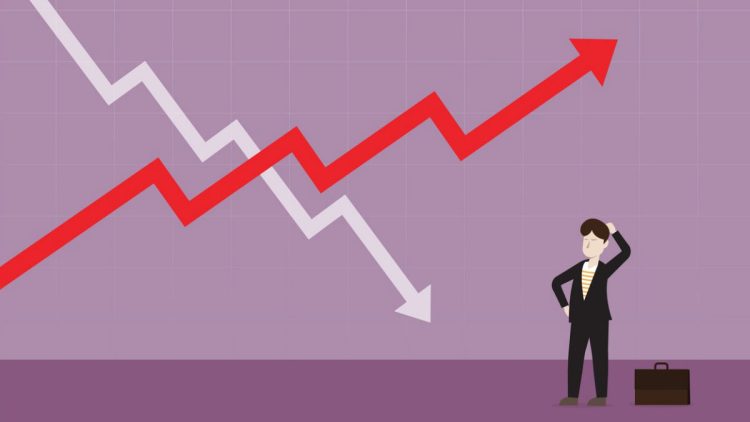Understanding the Nature of Market Volatility in 2025
As global markets navigate the turbulent waters of geopolitical uncertainty, inflationary pressures, shifting interest rate environments, and rapid technological disruption, volatility has become the new norm. What was once considered market noise now reflects the deeper structural and psychological forces at play in the financial ecosystem. Volatility, while often feared, is not inherently negative. It represents movement, change, and opportunity—but only for those who know how to manage it. The key to successful investing in 2025 is not in avoiding volatility but in managing risk intelligently. For seasoned investors, the art of risk management lies in anticipation, adaptability, and allocation. This article delves deep into the most pressing market risks of today and offers expert-backed strategies to mitigate them.
Common Risks Facing Investors in Today’s Market
Modern market volatility is complex and multi-dimensional. It is influenced by macroeconomic data, algorithmic trading, political instability, and even social media. Understanding the types of risks that investors face is the first step toward building a resilient portfolio.
- Systemic Risk: This is the risk of collapse in an entire financial system or market, often triggered by a domino effect among interconnected institutions. The 2008 financial crisis is a classic example. In 2025, systemic risks loom due to rising global debt, cross-border economic fragility, and banking system vulnerabilities, particularly in emerging markets.
- Inflation and Interest Rate Risk: Persistently high inflation and central banks’ tightening policies have significantly impacted asset prices. Higher interest rates reduce the present value of future cash flows, especially hurting growth stocks and bond portfolios.
- Geopolitical Risk: Wars, trade tensions, and political instability can send shockwaves through global markets. Conflicts in Eastern Europe, tensions in the South China Sea, and political uncertainty in major economies like the U.S. or UK pose unpredictable threats.
- Sector-Specific Risk: Certain sectors, such as real estate, fintech, or energy, can face specific risks due to regulatory shifts, commodity price fluctuations, or disruptive innovation. A diversified portfolio may still be vulnerable if overly exposed to an underperforming sector.
- Liquidity Risk: In times of stress, the inability to exit a position without significantly impacting the price can lead to larger-than-expected losses. This risk is particularly relevant for small-cap stocks, emerging markets, and alternative assets.
- Behavioral Risk: Emotional decision-making—panic selling, FOMO buying, herd mentality—can amplify losses during volatile periods. Psychological traps are one of the most underestimated but potent sources of risk.
- Currency and Exchange Rate Risk: For international investors, currency fluctuations can erode returns or amplify losses. A strengthening dollar, for instance, reduces the value of foreign investments when converted back to USD.
Expert-Endorsed Risk Mitigation Strategies
Effective risk management doesn’t mean eliminating risk—it means understanding, quantifying, and controlling it. Here are some expert-recommended strategies that professional investors are using to safeguard their portfolios in volatile times.
1. Diversification Across Asset Classes and Geographies
One of the oldest yet most effective tools for managing market risk is diversification. Spreading capital across various asset classes—stocks, bonds, commodities, real estate, and even cash—reduces the impact of a downturn in any single area.
- Cross-Sector Diversification: Holding stocks across different sectors like healthcare, technology, consumer staples, and energy ensures that sector-specific downturns don’t heavily impact your entire portfolio.
- Global Diversification: Exposure to international equities, especially in non-correlated economies, can buffer against domestic market declines.
- Alternative Assets: Allocating a portion to assets like gold, private equity, or hedge strategies can add protection during equity drawdowns.
2. Tactical Asset Allocation and Rebalancing
Regular portfolio rebalancing ensures that no single asset class becomes too dominant. In volatile markets, it’s crucial to take profits from outperforming assets and reallocate to those that have underperformed but show potential upside.
- Dynamic Allocation: Unlike static models, tactical allocation responds to market signals, macroeconomic indicators, and sector momentum.
- Risk-Parity Approaches: Some investors employ strategies where allocation is based on risk contribution rather than capital. This smooths out portfolio volatility by reducing overexposure to more volatile assets.

3. Stop-Loss Orders and Protective Hedging
Risk mitigation tools such as stop-loss orders and options hedging are vital in protecting capital during sudden downturns.
- Stop-Loss Orders: Automatically selling a position when it drops to a predetermined price can prevent further losses. While not perfect, it instills discipline and limits emotional decision-making.
- Options for Downside Protection: Purchasing put options or using collars (buying a put and selling a call) on core positions can cap potential losses while maintaining upside exposure.
- Inverse ETFs and Volatility Products: While used sparingly, these tools can help hedge equity exposure in sharp downturns. However, they require a deep understanding and are best used for short-term protection.
4. Position Sizing and Risk Per Trade
No matter how strong an investment thesis appears, no single position should jeopardize the portfolio. Experts advise using position sizing based on volatility and maximum loss tolerance.
- The 1% Rule: Risk no more than 1% of total portfolio value on a single trade or investment. This ensures that even a string of losses doesn’t result in catastrophic capital erosion.
- Volatility-Based Sizing: Allocate smaller weights to higher-volatility stocks and larger weights to low-volatility, high-conviction names.
5. Embracing Cash and High-Quality Bonds
In periods of high volatility, the opportunity cost of holding cash decreases. Cash not only preserves capital but also provides flexibility to seize new opportunities during market corrections.
- Cash as a Strategic Asset: Holding 10–20% in cash is not a sign of weakness but of strategic patience.
- Short-Duration Bonds and T-Bills: These offer safe yields with minimal interest rate sensitivity and provide a buffer against equity losses.
6. Stress Testing and Scenario Analysis
Institutional investors often use stress testing to simulate how their portfolios would perform under various adverse scenarios. Individual investors can apply simplified versions.
- Scenario Planning: Ask how your portfolio would fare under a 20% equity drawdown, a bond selloff, or an energy crisis. Adjust holdings accordingly.
- Monte Carlo Simulations: While more advanced, these models run thousands of possible market paths to estimate portfolio success rates—useful for retirement planning or goal-based investing.
7. Behavioral Discipline and a Long-Term Outlook
Risk management is not just analytical—it’s psychological. Remaining calm, objective, and committed to a plan is vital.
- Set Investment Rules: Define clear rules around buying, selling, and allocation to remove emotional interference.
- Limit Portfolio Checks: Constantly watching market movements can lead to irrational decisions. Experts recommend checking portfolio performance weekly or monthly, not daily.
- Maintain a Long-Term Perspective: History shows that markets recover. Avoid reacting to short-term noise and stay focused on long-term goals.
8. Incorporating ESG and Quality Metrics
Modern risk management also considers non-financial risks, such as environmental liabilities, governance scandals, or social backlash.
- High-Quality Companies: Focus on companies with strong balance sheets, transparent governance, and resilient business models.
- ESG Integration: Firms with strong ESG scores may be less exposed to regulatory, reputational, and operational risks, adding another layer of defense to portfolios.
Insights from the Experts
To better understand the practical side of risk management, we asked a few top portfolio strategists to share their current approaches.
Erik Langdon, CIO at Sentrix Capital: “Our biggest focus in 2025 is downside capture. We’re layering in put spreads on our high-beta holdings and rotating into quality dividend names. It’s not about beating the market—it’s about surviving it.”
Dr. Fiona Abbas, Market Risk Advisor at Nexus Analytics: “We use a factor-based model that reduces exposure to volatility-sensitive stocks when the VIX spikes. Factor timing may not be perfect, but it adds another layer of control to otherwise passive strategies.”
Julian Pérez, Founder of ShoreGuard Asset Management: “Liquidity is the hidden killer. We maintain a minimum 15% cash buffer and avoid exotic ETFs or niche strategies during turbulent periods. Simplicity wins in chaos.”
Building Resilience for the Future
Volatility is likely to remain elevated for the foreseeable future. Rather than fearing it, investors should treat it as a signal—a reminder to reinforce discipline, reassess allocations, and renew focus on fundamentals. Risk management isn’t a one-time task; it’s a continual process of learning, adapting, and protecting. Whether you’re an active trader, a long-term investor, or somewhere in between, integrating professional-grade risk controls into your strategy is not just prudent—it’s essential.
Conclusion
In a world where change is the only constant, risk management becomes the anchor that holds your financial ship steady. By understanding the nature of market risks, diversifying wisely, using tactical tools, and practicing emotional discipline, you can not only survive volatile markets but thrive through them. It’s not about eliminating uncertainty—it’s about preparing for it, adapting to it, and using it to your advantage.














































